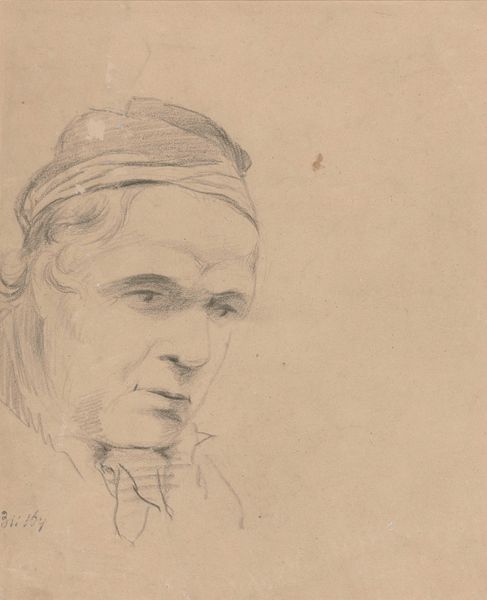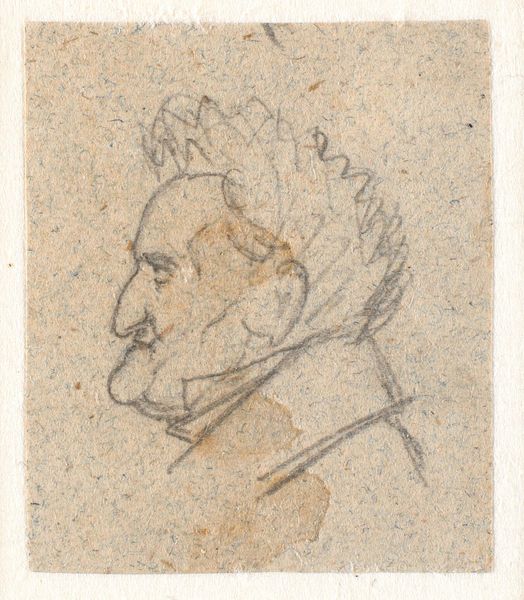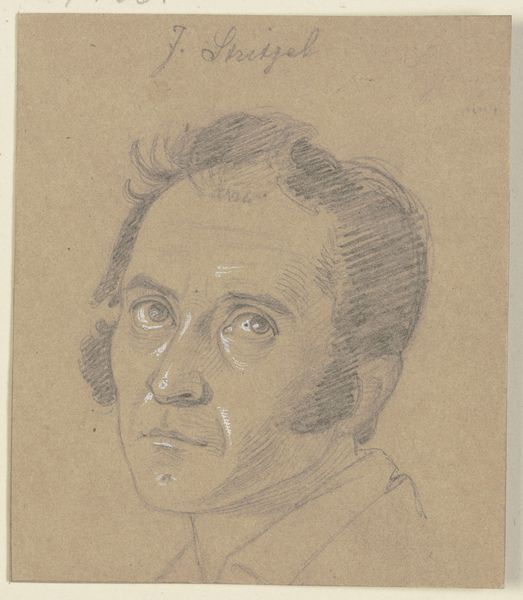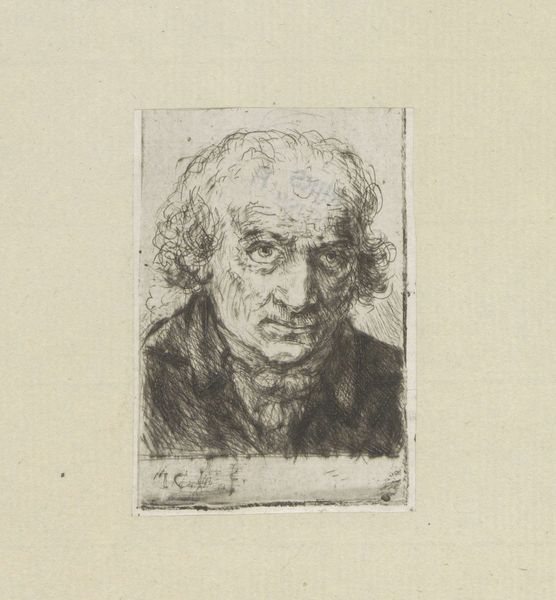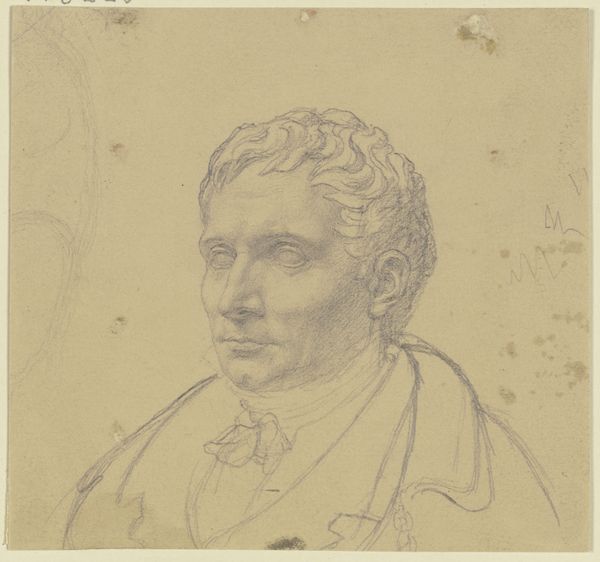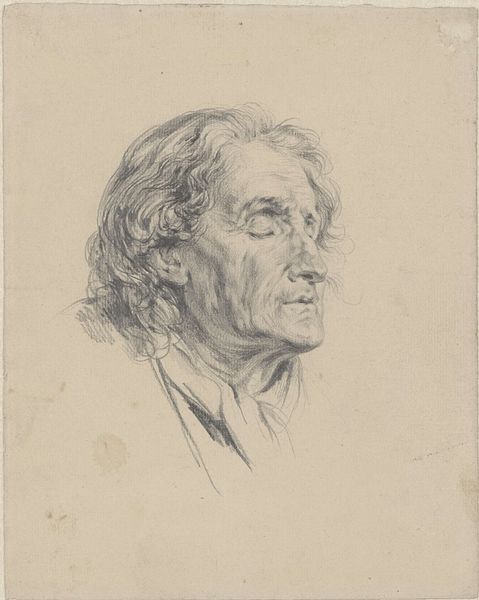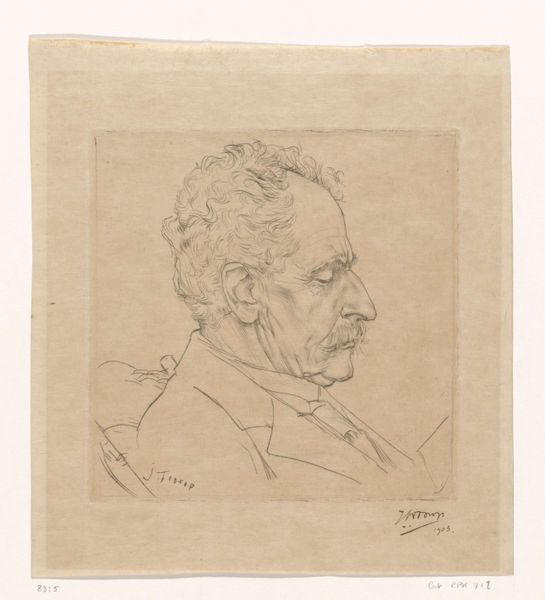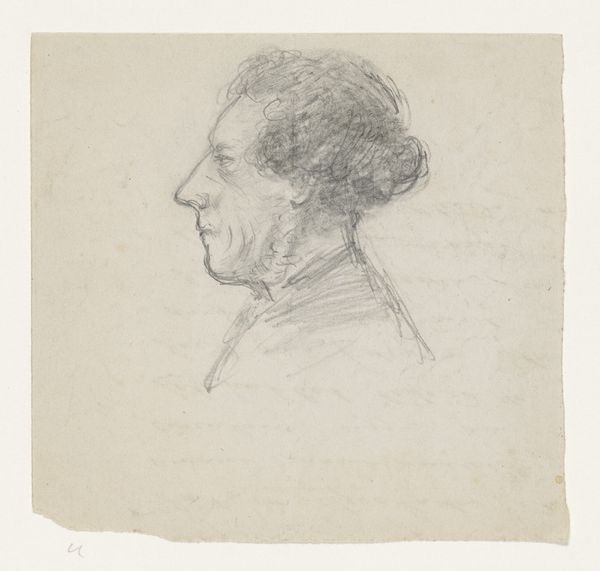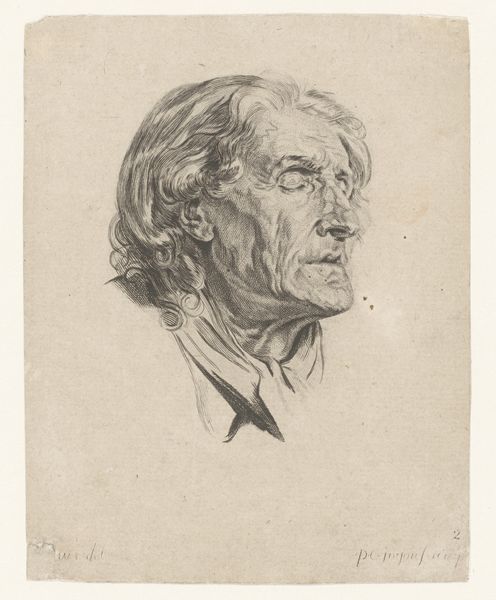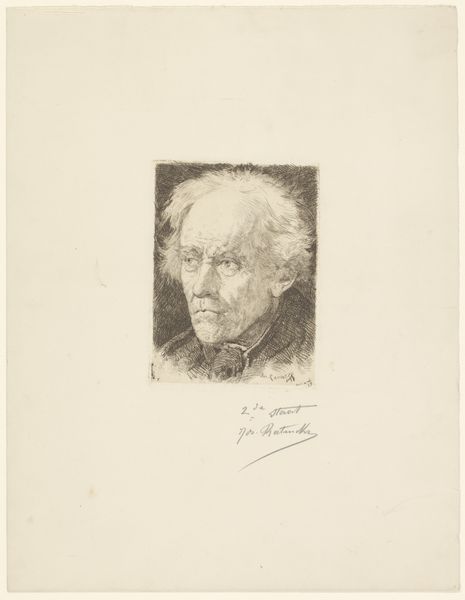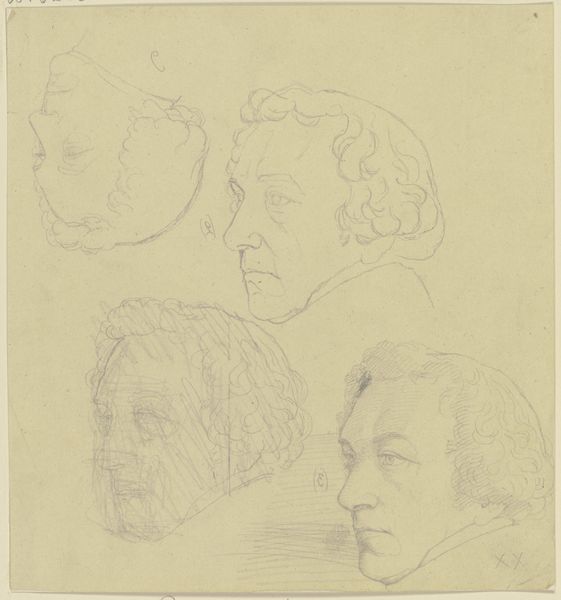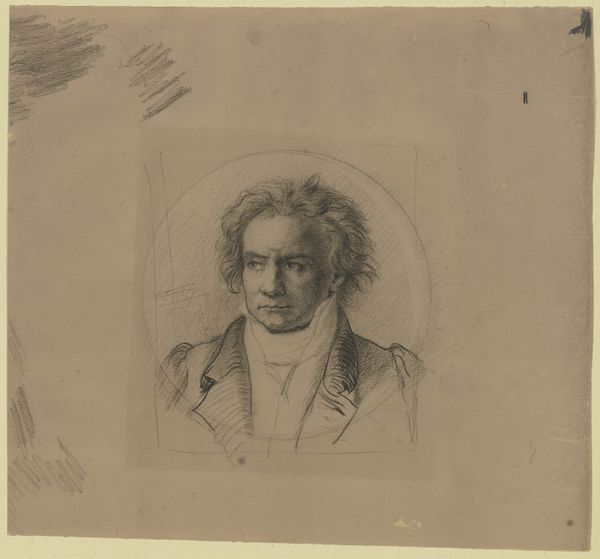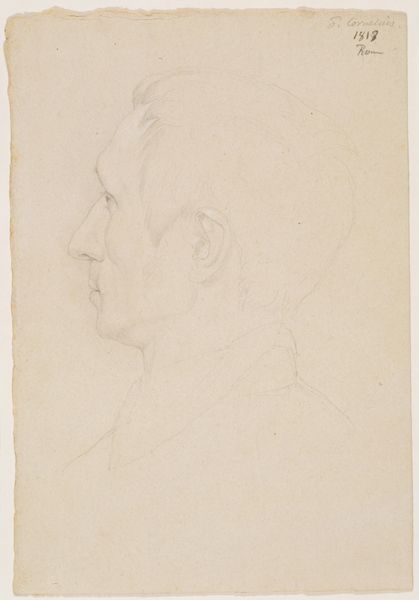
drawing, print, pencil, graphite
#
portrait
#
pencil drawn
#
drawing
# print
#
pencil sketch
#
pencil drawing
#
romanticism
#
pencil
#
graphite
#
northern-renaissance
Dimensions: Sheet: 5 1/16 × 6 5/8 in. (12.9 × 16.9 cm)
Copyright: Public Domain
Editor: This is Christen Kobke's "Portrait of the Sculptor Hermann Ernst Freund," made in 1837, using pencil and graphite. It strikes me as a rather intimate portrayal, but also a bit unsettling in its starkness. What do you see in this piece, considering its materials and how it was made? Curator: What’s most compelling here is not simply the representation of Freund, but the explicit demonstration of drawing itself as a process and labor. Look at the exposed, almost raw quality of the graphite on paper. The labor is visible; the marks and erasures are all still present. It challenges any idealized, transcendent view of art making. Editor: So, you're saying it’s less about the *who* and more about the *how*? But isn’t Freund himself a sculptor? Does that play into it? Curator: Exactly! Think about the means of Freund's own sculptural production – the physicality, the direct engagement with material. Kobke is creating a portrait of a fellow artist, yes, but it is rendered in a medium that makes it far more accessible, far less precious than a sculpture itself might have been perceived. There is the exchange of skills and also an interesting exchange between how they each manipulate materials. It encourages consideration about access to creating art and artistic recognition during this era. How might the social context have influenced that access and recognition? Editor: That's a fantastic point about accessibility. I hadn't considered the socio-economic implications. Curator: Material choices, like the humble graphite pencil, become loaded with meaning. It's about rejecting artistic hierarchy, where drawing can be seen as just as significant as the final artwork it prefigures. Editor: I see it now. The sketch-like quality almost democratizes the artistic process, showing the hand of the artist directly at work, emphasizing material use. Thanks; I’m seeing new layers that weren’t immediately apparent!
Comments
No comments
Be the first to comment and join the conversation on the ultimate creative platform.
